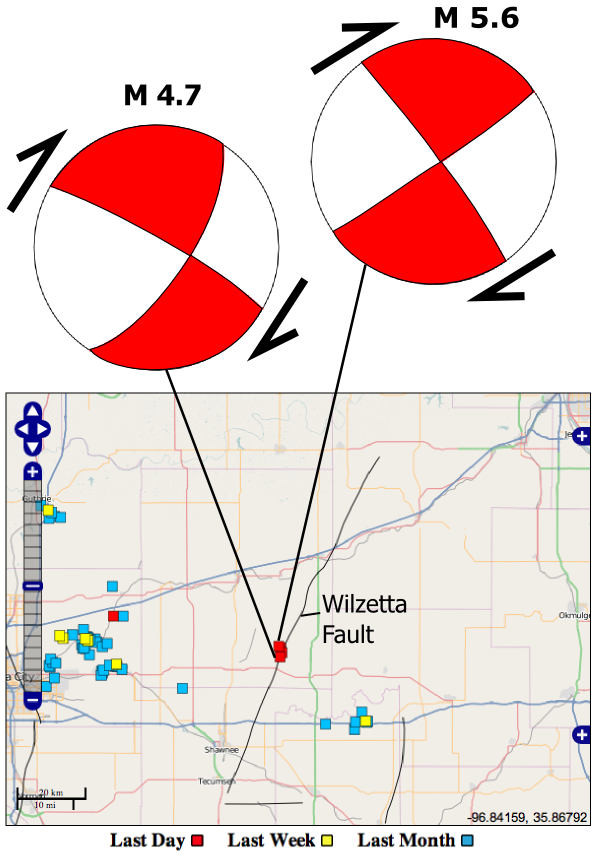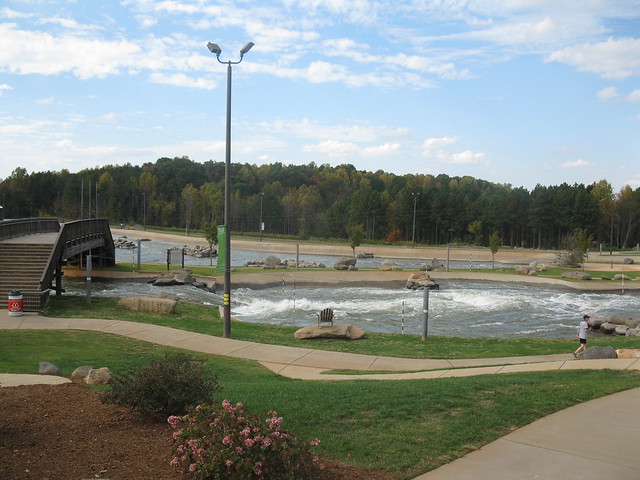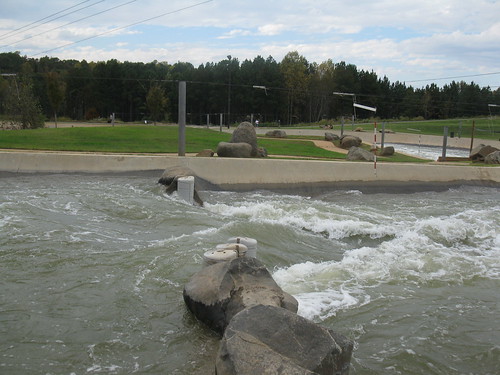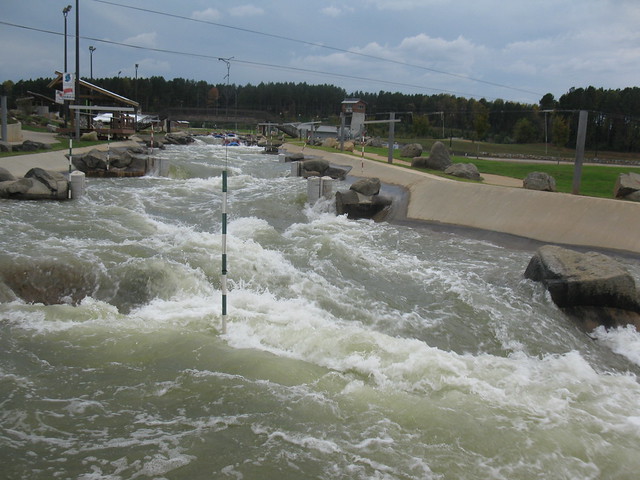![]() There was some slight seismic excitement over the weekend in central Oklahoma: a magnitude 4.7 earthquake shook things up early on Saturday morning, which turned out to be the prelude to magnitude 5.6 tremor late Saturday evening. The focal mechanisms (4.7, 5.6) are similar, show largely strike-slip motion, and according the Oklahoma Geological Survey, apparently occurred on a known subsurface fault, the Wilzetta fault, which has an east-northeast trend. Both earthquakes are consistent with dextral strike-slip on this fault, with the northwest side of the fault moving right (NNE) relative to the southeast side.
There was some slight seismic excitement over the weekend in central Oklahoma: a magnitude 4.7 earthquake shook things up early on Saturday morning, which turned out to be the prelude to magnitude 5.6 tremor late Saturday evening. The focal mechanisms (4.7, 5.6) are similar, show largely strike-slip motion, and according the Oklahoma Geological Survey, apparently occurred on a known subsurface fault, the Wilzetta fault, which has an east-northeast trend. Both earthquakes are consistent with dextral strike-slip on this fault, with the northwest side of the fault moving right (NNE) relative to the southeast side.

Focal mechanisms for the two largest earthquakes that shook central Oklahoma on 5th and 6th November. Both show right lateral strike-slip motion, and appear to be due to motion a known subsurface fault (the Wilzetta Fault). Map source: Leonard Geophysical Laboratory
The Wilzetta fault is part of a belt of ancient, buried thrust faults that runs through central Oklahoma and north into Kansas (this pdf is the best resource I found). This thrust belt was first active in the Carboniferous period, 350-300 million years ago, in the later stages of the continental collision that formed the Appalachians. Even when the tectonic forces that created them have long dissipated, faults are still weak points in the crust; and even far from an active plate boundary, the motion of tectonic plates across the mantle can generate stress. If that stress is aligned in the right direction, the scars of ancient orogenies such as the Wilzetta fault can still respond to them, generating earthquakes large enough to cause some damage.
Earthquakes are certainly not unknown in Oklahoma, and another reactivated thrust fault in the south of the state, the Meers fault, produced a strong enough rupture some time in the last millenium to produce an impressive scarp. But these two earthquakes, and a magnitude 4.3 in the same region last October (which had a similar focal mechanism) are three of the four or five largest tremors recorded in the last 150 years or so: lower-level seismic activity has also clearly ramped up in the last three years, with many more earthquakes in central Oklahoma that you would have expected based on records of the past century.

Earthquakes in Oklahoma since 2006. Note the sharp uptick in the past 3 years (click to enlarge). Source: Leonard Geophysical Observatory.
This fact does not mean that we could have predicted the weekend’s earthquakes, although I suppose it makes having them here less surprising that in a region which has remained totally quiet seismically. I do find myself pondering Seth Stein’s ideas on how earthquakes in plate interiors might be more distributed, with the locus of activity shifting between different regions over time.
For more on this earthquake, check out blogging from the The Trembling Earth, Paleoseismicity and Seismo blog, amongst others. I also highly recommend taking a few moments to appreciate this cool animation of the seismic waves generated by the biggest earthquakes propagating through the Earthscope transportable seismometer array. And possibly even cooler than that, all the birds and insects that were startled into the air when the shaking started were picked up on radar. Radar! Science is really awesome sometimes.






Nice plan for content warnings on Mastodon and the Fediverse. Now you need a Mastodon/Fediverse button on this blog.